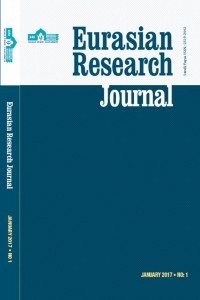THE INDISSOLUBILITY OF PHILOLOGY AND POETICS IN THE CREATION OF THE MEDIAEVAL EURASIAN KOINÊ
THE INDISSOLUBILITY OF PHILOLOGY AND POETICS IN THE CREATION OF THE MEDIAEVAL EURASIAN KOINÊ
Philological methods of analysis are not only perfectly congruous with reflections of a poetic order, but especially in the comprehension of a mediaeval epic tale, western or eastern. Philology practised as the art of unveiling images behind sounds and forms, figures and structures, communicates poetically, thus significantly the polyphonic import of the mediaeval epic tale. To defend this philological-poetics experience this paper compares the Turkic Dede Korkut Kitabı with the Armenian David of Sassoun, the poetic structures of the Tamil Periya Puranam, the iconic singularity of the Chinese Ji Bu Ma Zhen (Ji Bu Insulting the Enemy) and the Byzantine Digenis Akritas set within an Anatolian sub-koinê landscape with the Book of Dede Korkut and David of Sassoun. Homage has been rendered to three philologists whose philological training and academic works led them to the most extraordinary poetic works of art: F. Nietzsche, P.P. Pasolini and J.R.R. Tolkien.
Keywords:
Alterity, Creative imagination, Epic tales, Mediaeval Eurasian Koinê, Philology of the future Poetics.,
- ISSN: 2519-2442
- Yayın Aralığı: Yılda 4 Sayı
- Başlangıç: 2019
- Yayıncı: Hoca Ahmet Yesevi Uluslararası Türk-Kazak Üniversitesi
Sayıdaki Diğer Makaleler
THE ROLE OF CENTRAL BANK INDEPENDENCE IN PRICE STABILITY
Bulat MUKHAMEDIYEV, Azimzhan KHITAKHUNOV, Zhansaya TEMERBULATOVA
EUROPEAN UNION’S SANCTION PACKAGES AGAINST RUSSIA: CONTENTS AND IMPLICATIONS
THE INDISSOLUBILITY OF PHILOLOGY AND POETICS IN THE CREATION OF THE MEDIAEVAL EURASIAN KOINÊ
EDUCATION POLICIES IN THE 21ST CENTURY COMPARATIVE PERSPECTIVES
